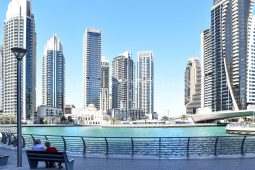This Tool is “Lightroom’s Top Masking Feature” for Editing Landscape Photos (VIDEO)
If you’re unfamiliar with Lightroom’s Intersect tool you’re in for a treat because the tutorial below from the PHLOG Photography YouTube channel explains how to use it to easily create “insanely complex” masks. And that means photos with accurate exposures, beautiful natural colors, and much more.
Instructor Christian Mohrle is a notable German landscape photographer and an equally adept image-editing expert who knows how to simplify seemingly complicated tasks. In this eye-opening episode he explains why his says the hidden Intersect tool is Lightroom’s “best masking feature” and demonstrates how to use it in less than 15 minutes.
Mohrle includes a link beneath the video so you can download his demonstration Raw file, follow along, and make the adjustments yourself as they’re explained, which is a great way to learn. He always begins with a few global adjustments to prepare a photo for the selective enhancements that follow.

As you can see, Mohrle photographed a pretty seaside scene that is significantly underexposed. His first step is to apply Lightroom’s new Noise Reduction and he walks you through the straightforward process that takes place in the Details panel when you click on Denoise.
Now it’s time to open the Basics panel and get the preliminary global adjustments out of the way. Mohrle’s goal is to warm up the tones while making the image a lot brighter. He raises shadows to bring increase detail, cuts exposure in the highlights to fix blown-out areas in the sky and uses the Temperature slider to begin warming up the tones.
Other preliminary adjustments include bumping up Texture to add sharpness to smaller details while dropping Clarity to create the softer look he’s after. After raising vibrance and saturation the basic modifications are complete, and it’s now time for the powerful hidden tool that really works some masking magic.

The trick begins with adding a simple Sky mask by clicking on Sky the option you’ll find within the masking panel. What follows is easier to understand by watching Mohrle demonstrate the technique, so we’ll refrain from summarizing how it works. Let’s just say that the method really is quite remarkable and easy enough for photographers of all skills levels to accomplish.
The lesson concludes with some straightforward color grading, a bit of judicious sharpening, and a quick cleanup in Photoshop. Compare Mohrle’s before/after images and you’ll be very impressed by the transformation.
You can find more great tips and tricks on Mohrle’s popular YouTube channel, so be sure to pay a visit and see what he has to offer.
And don’t miss the earlier tutorial we posted from another accomplished pro recently, demonstrating five pro tips for elevating your landscape photography game.




